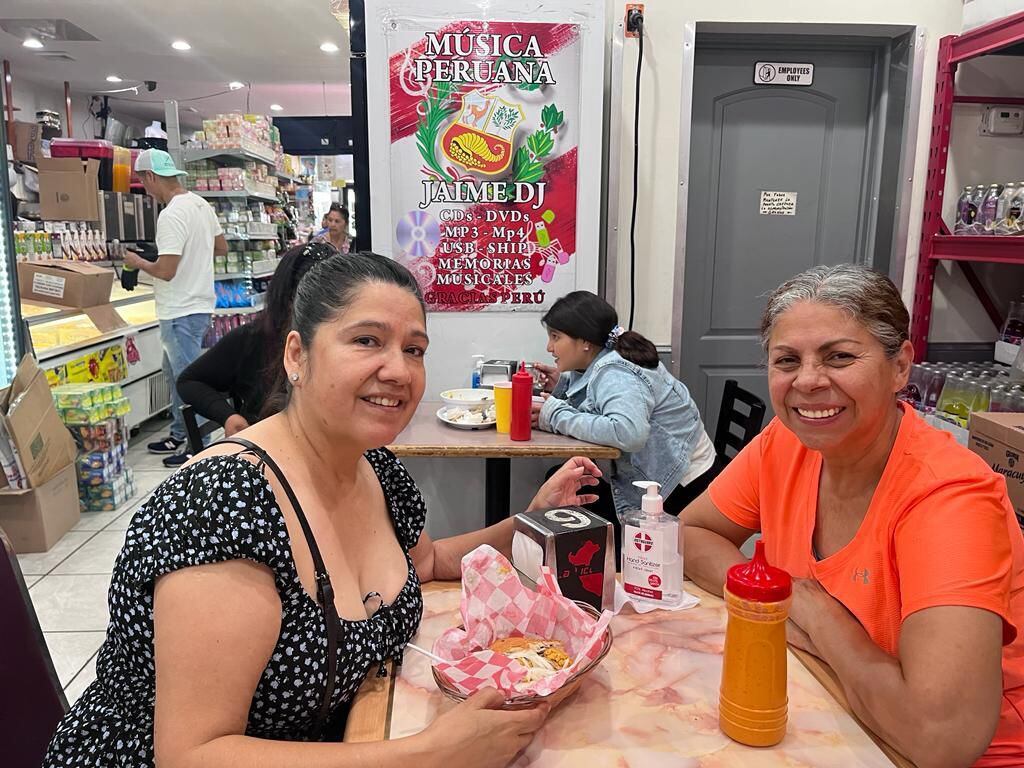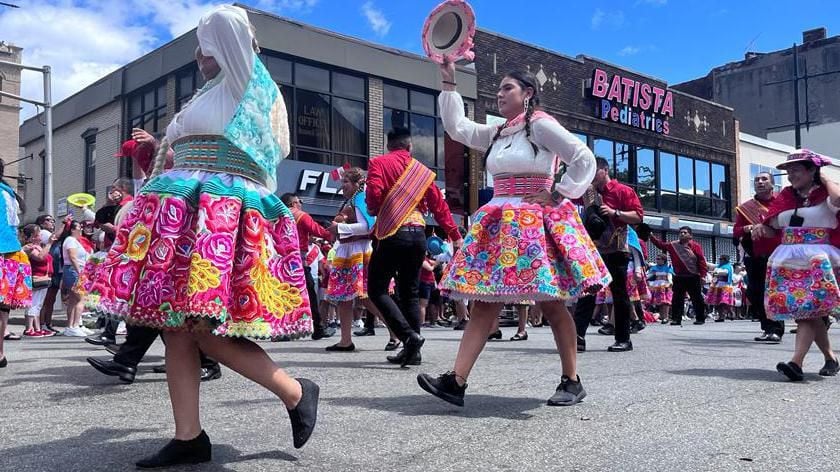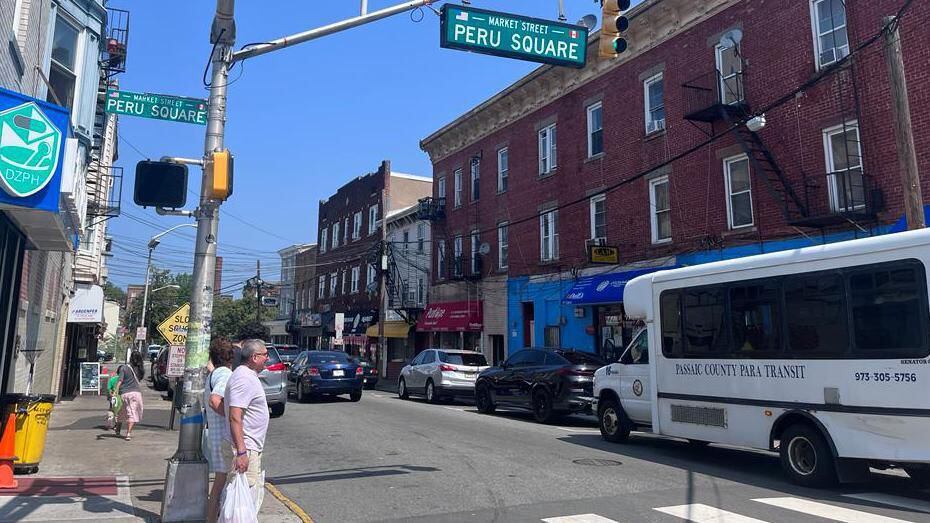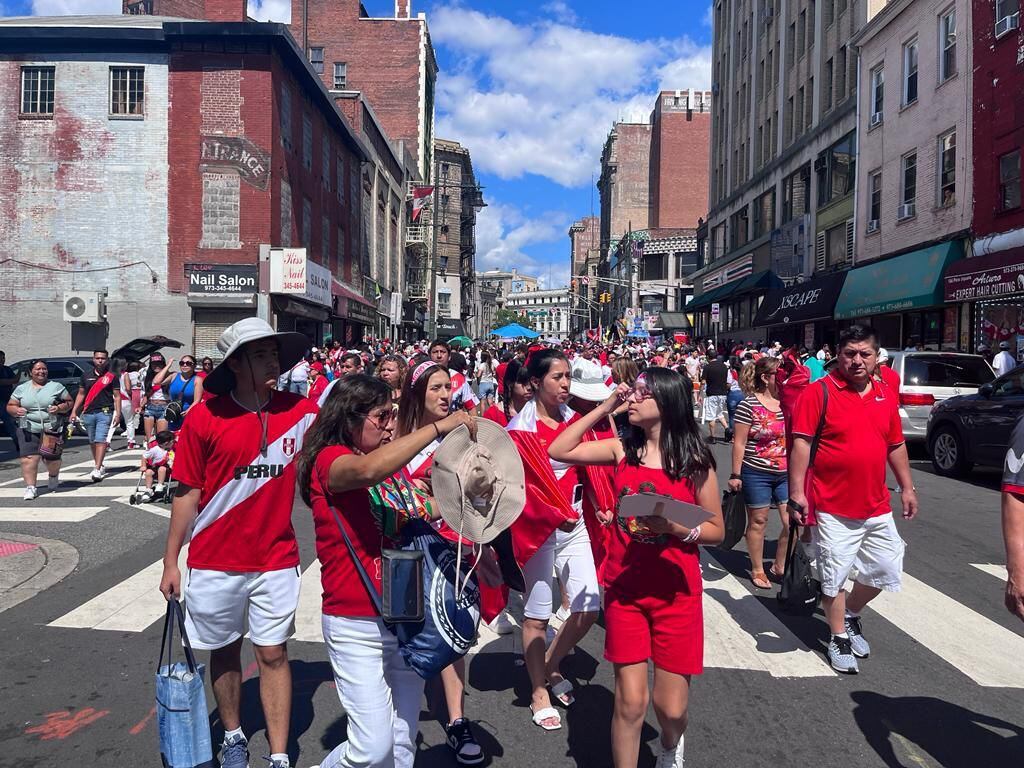So many people were walking on and around Market Street in Paterson, New Jerseythe last Sunday of July that seemed to be a concert or a football final.
But not. They were nostalgic Peruvians gathered for the Peruvian Parade, the parade for the National Holidays of their country that every year runs through this city in the northeast of the United States.
LOOK: Should the United States apologize for the coup against Allende in Chile?
This annual event usually attracts Peruvians from Paterson itself, from other parts of New Jersey and even from other states, such as New York, Connecticut or Pennsylvania.
Why in Paterson? Well, because a small part of the city is known as “Little Lima” or Little Lima due to the concentration of Peruvian restaurants and businesses that makes Paterson considered the “capital” of the Peruvian diaspora in the US.
One finds Peruvians in Paterson not only on the day of the parade, but all year long.
Alejandro Valderrama, known as “Figurita”, does not know how to cook. “But I know how to eat,” this 73-year-old Peruvian says with grace to BBC Mundo, in La Pampa, one of the restaurants in his land where he has lunch on Market Street, in downtown Paterson.
“I come for my Peruvian food,” says the man, thin and cheerful, who lives 20 minutes away and who has just finished a plate of anticuchos (beef hearts strung on a stick) with parboiled potatoes on a quiet Wednesday in July.
Half a block away, Dora Milla and Angelita Peralta, two compatriots who have lived in the US for about 30 years, share some country ham sandwiches at Los Inmortales bakery.

Milla, still sitting with a piece of sandwich on the table, assures that it is a place conducive to nostalgic consumption. Paterson is “a meeting point” for her countrymen, a meeting place for acquaintances and strangers.
Hundreds of Peruvians go to buy bread, have lunch and talk at the red-and-white establishments in the center of this city.
If it weren’t for the architecture and the predominance of exposed brick and wood buildings, it would seem like a sector of downtown Lima.
But how did this industrial city, created by Alexander Hamilton, one of America’s founding fathers, become a little piece of Peru in the US?
chain migration
This “Peruvianness” of Paterson took several decades to come together.
The city was founded by Hamilton in 1792 and became the first planned industrial city in the US.
By the end of the 19th century, it was a mainstay of silk production, which is why it became known as “Silk City” and attracted European migrants to work in its textile factories. It was also an important center for the manufacture of locomotives and weapons.
The city archives show the presence of a few Peruvians since at least the 1920s, who came to work in the textile industry.
A large number of them were merchant marines and had arrived on commercial ships to the US, says academic Gianncarlo Muschi, author of several investigations on the migration of Peruvians to Paterson.
But until after the 50’s they did not form communities or create associations.
Peruvian Guillermo Callegari told the magazine The Atlantic that when he arrived in this city, in 1962, he found some 11 compatriots, but from then on, some 20 or 30 arrived a week to work in the city’s textile factories.
These immigrants, who missed soccer, their religious practices, but above all food, got together to celebrate Peruvian festivities and eat, Muschi says in his studies.
Around these longings, they were forming informal religious, sports and cultural associations.
As they progressed, they helped other relatives, friends, and neighbors to get to Paterson, and they created networks that led to a chain migration.
In the 1970s, Peruvian women sold food from their country to their compatriots in their homes and on the street.
“These practices laid the foundation for the opening of restaurants years later,” says sociologist Elena Sabogal in the article “Building a Community: Peruvian Women in Paterson, New Jersey,” published in Peruvian Parade magazine in July.
Little by little they formalized these ventures, that is, turning them into restaurants, and opening other businesses, such as importers of products from their homeland, travel agencies, insurance, says Muschi.
These entrepreneurs were key to financing the associations and events that were creating recognition and notoriety for the Peruvian community.

Already in the 80s, more people arrived because of the economic crisis, hyperinflation and the internal armed conflict that was shaking the country. Since there were already established national networks, it was easier to get here, explains Sabogal.
In 1986, Guillermo Callegari organized the first Peruvian Parade for National Holidays. The parade continued every year and this 2023 attracted about 15,000 Peruvians.
Peru Square
At the beginning of the new millennium, a section of Paterson was already referred to as “Little Lima”, Muschi records.
In 2016, Pilar Rivas, who had arrived from Peru in 1978, launched a campaign to collect signatures and get some streets in this area to pay an official and lasting tribute to the community of her fellow citizens.
With the signatures in April of that year, the Paterson council voted to name about five blocks of Market Street as “Peru Square.”


By then, 85% of businesses in the sector were Peruvian, according to Rivas. According to the council, there are now 20 businesses with that origin in the bloc, although Peru’s consulate in Paterson says there are no official figures on the number of companies with this identification.
Regardless of the number, the council’s resolution on Peru Square recognized Paterson as “Little Lima” and as the unofficial capital of the Peruvian diaspora in the US.
Rivas did not like the name “Little Lima” because the city has received and receives immigrants from all over his country, not just from the capital.
“We wanted a street on behalf of the Peruvians who have lived here since at least the 1960s,” Rivas, who is also Deputy Mayor of Paterson, told BBC Mundo, “on behalf of all the Peruvian businessmen who came to work for a better future for his children, his family.”
Now in Peru Square “you can get the best food: lomo saltado, papa a la huancaína, cebiche, causa,” Andre Sayegh, mayor of Paterson, lists to BBC Mundo, and assures that he attends the patriotic parade every year.
“I’m a fan of Peruvian food, everyone enjoys it. People come from all over to try it, you don’t have to be Peruvian to appreciate Peruvian cuisine,” says Sayegh, who was born in Paterson but is of Syrian-Lebanese descent.
In addition to the gastronomic businesses, Peruvians now work in sectors such as construction, Rivas details, because throughout the 20th century factories left Paterson, in search of places where they could pay less taxes.
But this change did not prevent the progress of the Peruvians.
“We also have Peruvian educators in Paterson. They contribute in various areas: education, government, commerce and construction,” says Mayor Sayegh. “They are a vibrant part of Paterson, bringing positive energy and making countless contributions to our city every day. There would be a void without them.”

More and more Peruvians
Although other businesses also operate in Perú Square, it is the Peruvians who succeed driven by nostalgia.
“If someone sets up a Peruvian business here, the clientele is guaranteed,” says Isaí Valencia, owner of the Los Inmortales bakery.
The businessman perceives from his growing sales that more and more compatriots come to Paterson.
Martha Saire, who emigrated 20 years ago with her four children and is now the owner of the Doña Chichis restaurant in Perú Square, notes the same thing.
“Most of them come here, because there are already many Peruvians who can (host). You tell a friend: look, this is going to come, I’ll pay you, keep it there. Here it is more accessible. You can help and you can progress, ”he tells BBC Mundo at a table in his restaurant.
According to the United States Census, as of 2021 there were around 9,949 Peruvians in Paterson, which has an official population of 159,732 people. But the consulate calculates that in reality there must be between 25,000 and 30,000, and about 180,000 in the entire state of New Jersey, according to what the entity reported to BBC Mundo.
The consulate also said that in the last year or 15 months, at least 100,000 Peruvians have entered the US, and a few thousand of these may have reached New Jersey. Probably most have ended up in Paterson, but it’s hard to know the exact number.
In general, the US is the country with the most Peruvians outside of Peru, since until 2020 it had 30.2% of all emigrants.
There may be more Peruvians in other US cities, but although at a possible numerical disadvantage, Paterson remains the most iconic for expatriate Peruvians.
The main reason is that this city allowed them to concentrate and maintain their customs in a smaller area.
In contrast, in other places like Miami, Los Angeles or New York, Peruvians are more dispersed over larger areas and more intermingled with other immigrant groups, explains expert Michael G. Francesco, professor of Science, Philosophy and Religion at New Sweater.
This concentration only attracts more Peruvians from abroad and from other US states. “I have clients who come from Pennsylvania, Florida, New York. They gather here,” says Isaí Valencia, from the Los Inmortales bakery.
all and all come back
Also, although many of the migrants who originally arrived in Paterson no longer live there, but in nearby cities or states, they always return, whether it is to take care of their businesses, eat, meet people or participate in events such as the parade.
“They always come to Paterson, which always has that thing that attracts them, because there are the restaurants, the businesses. Here came the uncle, the father, the grandfather, so people come out of nostalgia,” Rivas told BBC Mundo.
Sabogal believes that there is no other city that is more emblematic or that identifies the Peruvian diaspora in the United States as much as Paterson.
“It is a purely Peruvian city, a Peruvian city outside of Peru. Everything reminds you a bit of Peru,” she says. “Even though Peruvians leave here, they keep coming back to Paterson, to express their Peruvian identity, to feel at home again.”
Source: Elcomercio
I am Jack Morton and I work in 24 News Recorder. I mostly cover world news and I have also authored 24 news recorder. I find this work highly interesting and it allows me to keep up with current events happening around the world.

:quality(75)/cloudfront-us-east-1.images.arcpublishing.com/elcomercio/IOWEVMXIS5DRZM7UCZ4TX3UXJU.jpg)





